Many companies claim to focus on creating a supportive and effective culture. But just what does that look like in the real world? KolbeCo Marketing Resources offers one example. And it changed everything.
“Culture does not change because we desire to change it. Culture changes when the organization is transformed – the culture reflects the realities of people working together everyday.”
Frances Hesselbein
When he finally arrived home, Scott Kolbe made a direct line to the fridge to grab a snack. It was late, and he hadn’t eaten dinner. Standing in the refrigerator’s glow, he couldn’t even remember whether he had eaten lunch. Scott felt like he was doing the work of three people.
His wife Lauren walked in the door shortly thereafter. Together they own KolbeCo Marketing Resources Inc., a company they started back in 2000 with nothing more than some industry know- how and passion for helping emerging companies tell their stories.
Now it was 2010. And the honeymoon of the business was long over. While Scott snacked, the two began their nightly venting sessions. They would air grievances but were never able to come to a good conclusion on how to effectively work through challenges. Both would shrug their shoulders, resigned to just toughing it out.
“My dad was a business owner, and he was always working hard,” says Scott. “And there are other things you tell yourself: If it were easy, then everyone would do it; hard work is part of business ownership.”
This wisdom was not without some merit. In 10 years the couple had built a successful company. But they had also stressed their marriage, gained almost 70 pounds between the two of them, and lost sight of their truest purpose and passions for what they do.
“None of our challenges were visible to clients,” says Lauren. “But when we were not venting about the business or at the office, it was on our minds. The business owned us.”
Just a few days ago I met the Kolbe’s at their office in Dardenne Prairie, Mo. I was greeted enthusiastically by Scott and Lauren who certainly both resembled the people I’d known for years, but there was something different about them. To be blunt, they looked thinner, rested and happy. They told me there was greater balance in their lives. They were doing meaningful work for clients with fewer employees, and things like gossip and office politics had no place in their seven- person company.
It seemed strange that after 10 years of doing things one way and with one set of principles, you could just change everything. They recounted for me a tale that had all the fervor and passion of a born-again believer.
The changes started a little more than two years ago after Scott Kolbe watched a presentation by Judy Ryan, president of LifeWork Systems, an organization that helps leaders to be more effective and create an engaged workplace.
“During her presentation she mentioned some things about employees who were actively not engaged, and it sounded a lot like what was happening with us,” says Scott.
A few days after the presentation, Scott called for a coffee meeting with Judy. Not at a coffee shop or breakfast joint but in the waiting room of the Lexus dealer where he was having his car serviced. It was the only time he had available because of the hectic pace he had created for himself between work, volunteer activity and his role as an alderman.
“The Kolbe’s were open and willing to say they had a mess on their hands,” says Judy. “They admitted where they had personality clashes. I remember them describing that something felt broken, but they did not know what it was. They were receptive to exploring a new way.
Assessment
They started with a survey that included a trust-gap analysis. The trust gap determines the importance of certain values, such as honesty and open communication, and then defines how well those values are being lived in the workplace. Danieal Broz, who joined KolbeCo five years ago and serves as the company’s director of accounts and information, recalls how revealing this part of the journey was. “When we got the results back from the trust-gap analysis, it showed we were not where we had hoped to be,” says Danieal.
KolbeCo had a trust gap that was twice the size of the international average. According to Judy, this is not uncommon. In her opinion, most of this stems from leaders taking on too much responsibility (working in the business) and a lack of focus on creating an engaged company culture (working on the business).
“When I am working with a client on company culture, what I am really doing is teaching them how to train others to be responsible, especially in matters such as how they get along, how much they get done and how well they stay motivated,” says Judy. “We start looking at what it would mean to let go of controlling management methods, and then I teach them tools to develop leadership and emotional intelligence in all their employees.”
Mission and Values
Over the months that followed the analysis, there was training and many one-on-one coaching sessions and impromptu foxhole phone calls as the Kolbe’s and Danieal learned more about mentoring, healthy communications, strategic alignment, internal motivation and how to redirect poor behavior. However, a bulk of the work at this point was focused on deciding on their mission, the true purpose of their business and the creation of company values.
“The mission actually did not take long for us to create,” says Lauren. “We serve as a catalyst for confidence and shine. It was something we believed in already, but the values were something that took awhile to uncover.”
To help the Kolbe’s discover their values, Judy led them through a series of exercises. They were asked to look back thoughtfully on the kind of work that gave them joy. After more than six months, the Kolbe’s adopted a list of company values that includes being cause-oriented, personally responsible, positive, respectful in all communications and organized. “Values are hard because you are putting things out there on the line and saying you will live by them. It takes humility, and you have to stand behind your beliefs. It can take up to a year to define a company’s values,” says Judy.
“Transforming culture is not for the faint of heart, when you do not conduct business as usual, it is not always going to make people happy.”
Judy Ryan, CEO
Getting Buy-in and Setting Goals
Once the mission and values were decided upon, the change in company culture started to coalesce. Everyone on the team set personal mission statements and goals they share regularly with a mentor within the organization and with Judy. Some of the goals had to do with work and achieving greater things for KolbeCo, but other goals, such as “completing a full triathlon” (one of Scott’s) had seemingly little to do with increasing revenues.
“We found that our mission of creating confidence and shine was not just important for our clients,” says Lauren. “Once we found our values and started living by them, our mission was some- thing we began to create in our lives in every way – with our clients, employees and within ourselves.”
The Kolbe’s now use their mission and values when they are bringing on new hires or considering new clients. In fact, it was these values that brought them Dana Manar, account executive, just one year ago. “During the interview they asked me a lot of questions around relationships and how I would handle myself in certain situations,” says Dana. “Now that I am here, I can see the work we do on our culture and on our own development strengthens relationships and encourages us to have those uncomfortable conversations you would usually avoid in a more traditional corporate environment. When we use the communication tools, then no one gets catty.”
Continued Learning
Today the Kolbe’s are still actively learning through coaching from Judy and a mentorship structure within the organization. Danieal meets regularly with all of the other employees to discuss where they are on theirs. She says each person is encouraged to demonstrate leadership. Not in the sense of taking control but by leading meetings, collaborating in projects, being proactive, or just encouraging and inspiring one another.
“For me the biggest shift is that I am not working here just for myself or for a paycheck,” Danieal says. “I am here to support and empower my team. Our communication and relationships are so much better. We are more engaged and have lost the office politics.”
The Kolbe’s admit that they do not use the tools they have been given perfectly, that for them, the process of re-teach ing themselves to always be purpose- driven and to pay new attention to their communication techniques is at times daunting.
“There have been times I left the meeting with Judy and I did not necessarily feel great,” says Scott. “There is so much to learn. When it comes to doing work like this, you have to pass through phases of what Judy calls being ‘consciously incompetent.’”
However, when Judy looks at her clients, she is excited at their direction and progress. “I think they are poised for a lot of growth now,” says Judy. “They are at the stage where they have worked so much and become so skilled. They can now move from healing to creating. They can build on the bedrock of their values. They are becoming more extraordinary every day.”
Changing Everything
While the future is uncertain, their present-day situation is already impressive. The Kolbe’s no longer work 60- hour weeks. They take hiking vacations together. They have shed 70 pounds collectively. Scott, after years of not exercising, is in a running club, and he passed along his alderman position to someone who was on fire for it. They are more active in their community and have taken leadership roles with stray rescue. They credit much of the company culture work (which they refer to as “Judy stuff”) as being the catalyst for helping them lead more balanced and healthy lives.
“Whatever we are passionate about, KolbeCo tries to support us,” says Dana. “I have a DIY blog, and they help me to stay inspired to grow the readership. They encourage me in every way to pursue what I am passionate about.”
While the benefits are immense, so is the work involved. Here is a reality check on creating a supportive culture.
It is Going to Take Longer Than you Think it Should
The kinds of changes required for shifting company culture start with some internal fact facing and uncomfortable conversations. “I thought I would learn a few tools or tricks on how to communicate better,” says Scott. “But this process takes a long time to develop. And we are still learning.”
You Have to be Willing to get Intimate
The Kolbe’s have become vulnerable, real and open with Judy and with each other. They are now more receptive to others without trying to change them. They report they are learning to be honest and direct instead of avoiding the proverbial elephant in the room. “I think you have to be ready to put it all out on the table,” says Lauren. “You have to be honest with yourself. The more you let go of defensiveness and stay open, the more effective you will be.”
It is not all Touchy-Feely and Kumbaya
Many of the coaching sessions Judy has had with the Kolbes have been anything but feel-good.
“Transforming culture is not for the faint of heart,” says Judy. “When you do not conduct business as usual, it is not al- ways going to make people happy. There are going to be ups and downs, and there will be darkness. But if you can laugh at yourself; stay focused on slow, steady growth; and learn one tool at a time, then soon you can look back on how far you have come.”
Seems Like Abdicating Authority
When you engage others to take on leadership, it is natural to feel as though you are giving up some of your authority, according to Judy. “Anytime you try a new way of leading, it can feel disconcerting, a threat to security,” she says. “But the real role of a powerful leader is to manage himself and not others. Doing this work means you have to confront long-standing beliefs about leadership and authority.”
Give Yourself a Break
According to Danieal, the hardest part of working on a company culture is giving herself a break when she falls short. However, now she understands that making mistakes gives her the grace to let others off the hook. “I am not perfect at communicating, and some days I don’t do well,” she says. “But that is part of the work. I have to be OK with not being perfect. I am going to struggle at times because of my personal experiences, and sometimes things get frustrating when I’m in a mentoring session and someone will not see the bigger picture. But I can be OK with not always being perfect.”
This article was published nationally as a cover story Recalibrating Your Business: A Story on KolbeCo, in St. Louis Small Business Monthly, March 2013.




